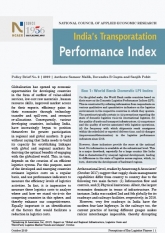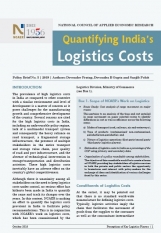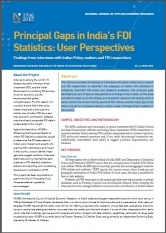Sanjib Pohit
D B Gupta
Sameer Malik
September 2019
Globalisation has opened up economic opportunities for developing countries in the form of outflow of value-added services, low-cost raw materials , human resource skills, improved market access for their exports, efficiency gains in their economies through technology transfer and spill-over, and resource re-allocations. Consequently, various developing countries, including India, have increasingly begun to position themselves... Read More
Download PDF















